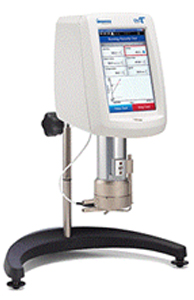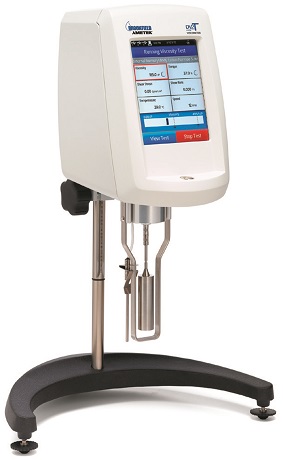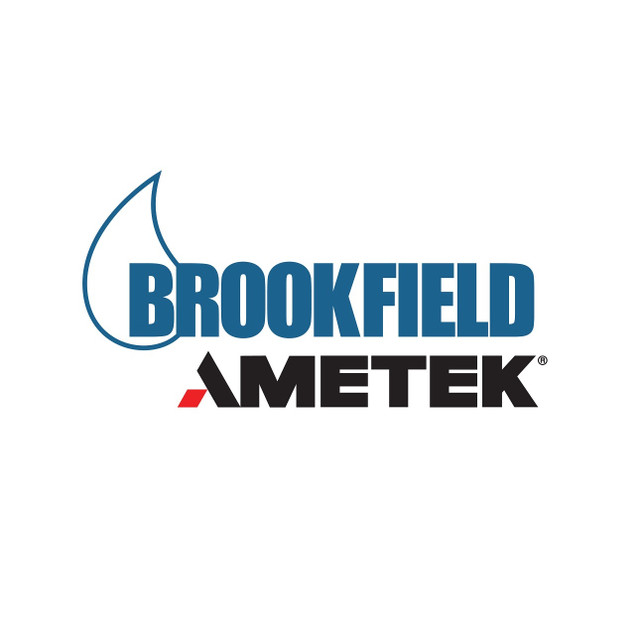DVNext Rheometer Viscometer

The DVNext Rheometer incorporates advanced features for repeatability
and reliability. It is an easy-to-use, stand-alone instrument for measuring
viscosity and yield stress. It’s available in a Standard version and a 21 CFR
Part 11 Compliant version.
FEATURES AND BENEFITS
Standard Version
- Digital Leveling
- Start-up Wizard
- Gel-Timer Functionality
- Optional Magnetic Coupling Attachment (replaces EZ-lock)
- Optional Bar Code Scanner
- 17025 Calibration (Optional)
Compliant Version
- Hand-held Scanner for Bar Code Detection
- Accessory Detection with Bar Code Detection
- Magnetic Coupling Attachment (replaces EZ-Lock)
- Compliance to 21CFR Part 11 in Stand-alone and GAMP Compliant
- Ethernet Connectivity
- LIMS Connectivity
- Printing to non-editable PDF
Each of our
standard Laboratory Viscometers/ Rheometers are supplied with an internal
spring used to calculate the viscosity of a material.
LV is for low viscosity materials and can measure the thinnest materials. Typical examples include inks, oils, and solvents.
RV is for medium viscosity materials than those measured with an LV torque. Typical examples include creams, food, and paints.
HA is for higher viscosity materials than those measured with an RV torque. Typical examples include gels, chocolate and epoxies.
HB is for even higher viscosity materials than those measured with an HA torque spring. Typical examples include asphalt, caulking compounds, and molasses.
Additional special springs are also available upon request.
DV2T Touch Screen Viscometer

The DV2T Viscometer features a 5-inch color display
to guide users through test creation and data gathering for fast and easy
viscosity measurements. The DV2T also offers powerful programming capabilities
and results analysis including data averaging and QC limits with alarms.
FEATURES AND BENEFITS
- 5-inch full
color, touch screen display supports multiple languages - Displayed
info includes: viscosity (cP/mP·s), temperature (°C/°F), shear rate/stress, %
torque, spindle/speed, step program status - Enhanced
security provides customizable user levels and password access. - Built-In
options include timed tests, data averaging, programmable QC limits/alarms,
customizable speed/spindle lists, on screen data comparison - Auto range
shows maximum viscosity measured with any spindle/speed combination - USB PC
interface provides optional computer control and automatic data gathering
capability Download custom test programs with included PG Flash software -
Front-facing bubble level for convenient viewing
-
Built-in temperature probe
-
Accuracy of ±1.0% of range with displayed test data
-
Repeatability of ±0.2%
-
17025 Calibration (Optional)
-
NIST traceable viscosity standards available
Also available: Magnetic coupling system, durable ball bearing suspension system,
quick action lab stand and free RheocalcT software.
Each of our standard Laboratory Viscometers/
Rheometers are supplied with an internal spring used to calculate the viscosity
of a material. These springs have different measuring capabilities:
LV is for low viscosity materials and can measure the
thinnest materials. Typical examples include inks, oils,
and solvents.
RV is for medium viscosity materials than those
measured with an LV torque. Typical examples include creams, food,
and paints.
HA is for higher viscosity materials than those
measured with an RV torque. Typical examples include gels,
chocolate and epoxies.
HB is for even higher viscosity materials than
those measured with an HA torque spring. Typical examples include asphalt,
caulking compounds, and molasses.
Additional special springs are also available upon
request.

